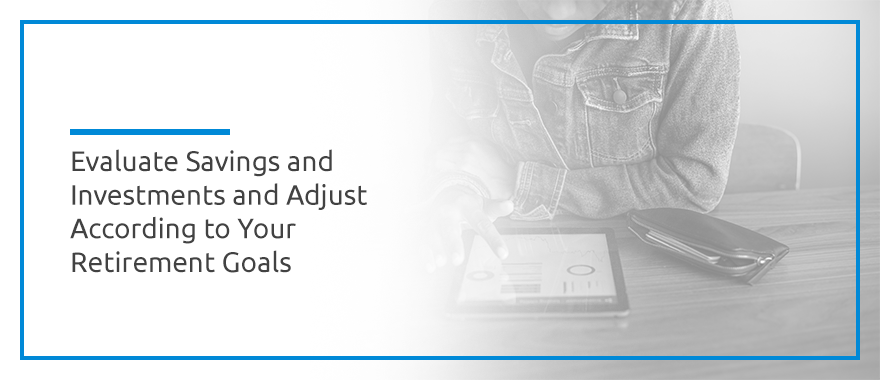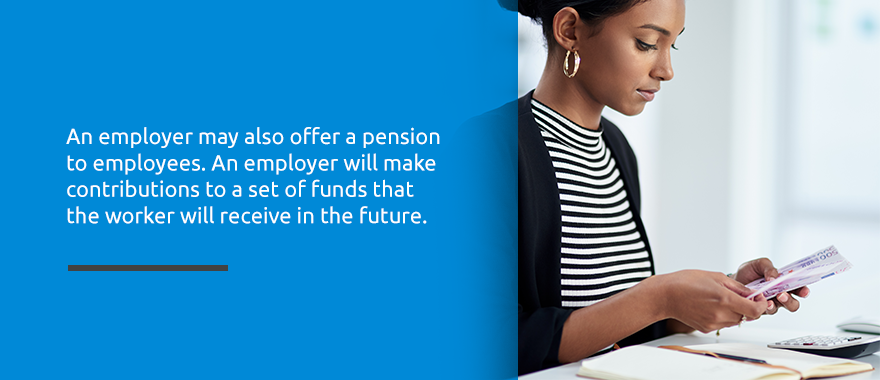Preparing for retirement is one of the biggest financial hurdles we’ll tackle in our lives. By creating a retirement plan, you can make achieving retirement success attainable. So how do you create a retirement plan? What items should be on your pre-retirement checklist? What will your insurance needs at retirement be?
The actions you take today to achieve your retirement goals will determine the lifestyle you can enjoy in the future. To help you create the retirement of your dreams, we’ve compiled this comprehensive guide of retirement planning tips and steps.
Have you just started working your first full-time job out of college? Have you been in the workforce for 10 years with nothing saved for retirement? Or is retirement just over the horizon? Whatever your answer, this is when to start planning to retire.
First on the list of retirement planning steps is setting retirement goals. Many employees are not on track for their retirement goals, or they’re unsure what exactly their goals should be.

One of the most important steps in setting your retirement goals is determining how much you’ll need to have saved to retire comfortably. These days, we can’t rely on Social Security benefits to carry us through our golden years. Many of us need substantial personal savings to sustain our lifestyle, cover health care costs and enjoy our later years to the fullest.
The general rule of thumb is that you can withdraw 4% per year from your retirement portfolio. For example, if you want to spend $40,000 a year, you’ll need $1 million in retirement savings. To calculate how much you’ll need to have in retirement assets, multiply what you want to spend each year by 25. If you want to spend $50,000 per year, you’ll need $1.25 million. If you want to spend $100,000 per year, you’ll need $2.5 million.
So how do you calculate what your spending power should be in retirement? Look at your budget to see what you’re currently spending each year. How do you anticipate some of those costs might change in retirement? Health care costs typically increase in our later years, and if you plan on traveling widely, your annual expenses may increase.
Other costs, on the other hand, may decrease, such as commuting, housing and clothing costs. Many empty-nesters downsize their homes in retirement and move to lower cost of living areas, so your housing costs may drop significantly. Create a budget with your projected expenses in retirement to better understand how much you should be saving.

In preparing for retirement, you want to be sure your goals are realistic. If goals aren’t measurable and achievable, we’re more likely to give up on them altogether. We assume that if our goal isn’t something we can accomplish, why bother trying?
So what do you do if your goals aren’t realistic? What if your current savings rate won’t get you to your target for retirement savings?
Your financial health can determine the success of your retirement preparation. Take an honest look at your current finances and how you manage them, and determine if you need to make changes. If you have retirement goals that you can’t attain at your current savings rate, then something needs to change within your finances.
Here are a few tips to follow if you need to improve your financial health to meet your retirement goals:
While improving the state of your finances won’t happen overnight, it is possible over time with persistence and continuous effort.

Without having a plan in place, hitting your retirement goals will be much more difficult, if not impossible. How can you reach your destination if you don’t know how to get there? After you set your goals, the next step is to create a retirement plan as soon as possible so you can determine exactly how you’ll achieve those goals.
After you’ve determined what exactly your goals are for retirement, write them down so you can track your progress over time. Take a look at your current investments and assets and calculate what you’ll need to save each year to meet that retirement goal.
Your written plan doesn’t need to be long or overly complicated. All you need is a plan that clearly states what your goals are and how you will achieve them.
When you have clear goals, you can begin to map out how to reach them.
Perhaps the most important step in preparing for retirement is actually getting started. Many delay saving for retirement and excuse their procrastination with excuses.
Any of these sound familiar? When it comes to saving for retirement, you don’t need to be making a lot of money or investing a large amount every month to make progress. The earlier you start, the better.
If you look at your current savings rate and discover that you’re not saving enough to meet your retirement goal, you can start taking action now. You can identify ways to save more, reduce your expenses and pay off debt so you can get back on track. The sooner you can implement a solid retirement plan, the more likely you are to achieve your goals.
Remember that it’s never too late to start or to get back on track to reaching your retirement goals.

You can use an online retirement calculator to track your progress every year. Though you’ll see highs and lows from month to month if you’re investing, you should see an upward trajectory over the long term. Understand that major life events, such as having a child, losing a job and getting married or divorced, can have an impact on your plan.
It’s okay if you want to change your plan as your situation changes. Maybe you want to increase your retirement goal if you get married or have a child or if you want a more luxurious retirement.
Communicating about your retirement plan with your partner, family, friends or financial planner is another great way to stay on track. Having someone who can hold you accountable or who is also depending on you staying on track for your retirement goal can be excellent motivation to continue working toward your goals.
Remember that if you’re investing in the stock market as part of your retirement savings portfolio, the market can be volatile. It has its ups and downs, and the rate of return can vary dramatically from year to year, but historically, the market is actually quite stable over the long run. Keep your end goal in mind while investing and try not to let your emotions get involved.
Another important step for preparing for retirement is ensuring you have the proper life insurance for retirement. Sometimes we can focus all of our attention on investing and saving for retirement and neglect ensuring we’re protected against possible risks. One of the ways you can reduce or eliminate financial risk is by having the proper life insurance.

Do you have a spouse or dependents? Do you have loved ones who rely on your income? If so, ensuring you have the proper life insurance is key to a successful retirement. You want to make sure your loved ones are taken care of, and life insurance will protect them financially.
You’ll likely want life insurance if:
Take an unbiased approach to determine your coverage needs before you think about what policies can fill any coverage gaps. You should review your policies every year, as major life events can alter your coverage needs. As you enter your 60s, you may want to consider new options for life insurance.

The two major types of life insurance are permanent life insurance and term life insurance.
Whether your premiums are fixed or not depends on your policy, and the premium itself is based on your current health and medical history. In a whole life insurance policy, your premium consists of two components — the cost of insurance and savings. The premium remains consistent year to year, and the portion of your premium that goes toward savings goes to your cash value, which grows tax-deferred.
Many people are attracted to term life insurance because of its simplicity and lower premiums. Term lengths range from one to 30 years, or they can last to a certain age, which is generally 65. Among the most popular life insurance policies is the 20-year term policy. Term life insurance doesn’t offer any extra features, so there also aren’t any additional fees or costs associated with this type of life insurance. You can also opt to cancel your policy while it’s active without taking a loss.
After your term policy expires, you can choose to renew your policy, obtain a new term policy, convert to a permanent policy or continue uninsured.
Selecting the right life insurance policy for you depends on your life circumstances and what you’re looking for in your coverage. When preparing for your future, keep in mind the importance of life insurance at retirement.

Do you already have some savings and investments? Are you just getting started on your retirement savings? The following are a few savings and investment options you can use to prepare for your dream retirement.
One of the best investments may be an employer-sponsored 401k. This is for a few reasons:
If your employer offers a 401k with a match, this may be a great investment avenue for you to pursue. This is a benefit you get for being an employee with this company, so take advantage of it.
An employer-sponsored retirement plan isn’t your only option for saving for retirement. An IRA can be another excellent way to invest for your retirement. To contribute to a Roth IRA or deduct the contribution, there are some income limits and restrictions, so do your research to select the best IRA option for you.
Most will choose from either a traditional IRA or a Roth IRA. For the self-employed, you also have the option of contributing to a SEP IRA. If you’re unsure whether a traditional or Roth IRA would be better for you, you can contribute to both.

An employer may also offer a pension to employees. An employer will make contributions to a set of funds that the worker will receive in the future. The earnings on the investments in this pool of funds are given to the worker when they retire. You may also be able to contribute part of your wages into a pension plan. A pension can offer you a steady monthly income in retirement, so if your employer offers a pension plan, this can be quite beneficial for you in retirement.
Having a diversified portfolio can help you reduce your risk. If your portfolio isn’t diversified, you’re risking your entire retirement on one type of asset and the consequences could be severe. To reduce your risk, choose the investment allocation that makes the most sense for your age, financial goals, time horizon and risk tolerance, along with considering assets such as your home and real estate properties.
You can also generate additional income through a side-hustle or self-employment in retirement. You can work a freelance job part-time if your Social Security benefits and current assets aren’t enough to sustain your lifestyle. You can also earn money through investments, including property, which doesn’t affect your Social Security benefits. This means renting out a spare room or another property could bring in supplemental income to boost your retirement.
Remember that your most important asset is you because of your ability to make money, so you need to make sure you are protected.
When you obtain a life insurance policy from David Pope Insurance Services, LLC, you’ll know your family is protected if something happens to you. We want to give you the peace of mind you need so you can relax and enjoy your retirement.
For affordable, quality life insurance in Missouri, contact us at David Pope Insurance Services today.